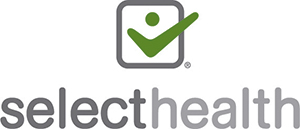June 16, 2020
by Dr. Connie Hwang
It’s no secret that telehealth has emerged as a bright spot throughout the ongoing COVID-19 public health emergency – greatly increasing access to affordable care. According to a recent national poll, use of telehealth services has nearly tripled, with over 28 percent of respondents reporting use of some type of virtual care in the last three months.
 Based on the Intermountain and SelectHealth published success with virtual care, I asked Dr. Russ Kuzel, Chief Medical Officer at SelectHealth, and his colleagues Angie Fedderson, Director for Medical Review and Coding, and Jamee Wright, Strategic Communications Manager, for their insights on the future of telehealth. Our recent conversation, as summarized below, suggests that progress made during the current COVID-19 pandemic will persist, bolstered by data-driven approaches to integrate virtual care into standard care pathways and the design of enhanced telehealth benefits.
Based on the Intermountain and SelectHealth published success with virtual care, I asked Dr. Russ Kuzel, Chief Medical Officer at SelectHealth, and his colleagues Angie Fedderson, Director for Medical Review and Coding, and Jamee Wright, Strategic Communications Manager, for their insights on the future of telehealth. Our recent conversation, as summarized below, suggests that progress made during the current COVID-19 pandemic will persist, bolstered by data-driven approaches to integrate virtual care into standard care pathways and the design of enhanced telehealth benefits.
SelectHealth is a not-for-profit health plan serving more than 900,000 members in Utah, Idaho, and Nevada. Integrated with Intermountain Healthcare, SelectHealth has been recognized as the highest-rated plan in Utah since 2005 and is part of a health system renowned for innovating across a variety of care types and settings to help transform the U.S. health care system.
What has been the SelectHealth approach to telehealth prior to and during the COVID-19 public health emergency?
DR. KUZEL: SelectHealth has historically invested in two distinct strategies – the first, called Intermountain Connect Care®, offers video-enabled telehealth interactions between clinician and patient for urgent care or referral care needs. The second strategy focuses on virtual clinician-to clinician consultations for specialty areas like Intermountain’s NICU telehealth program and includes support for remote patient monitoring (e.g., ICU monitoring with rural hospitals). Since the COVID-19 pandemic, SelectHealth has seen tremendous growth in all types of virtual care, including telephone only, synchronous audio-visual communications and asynchronous communications.
ANGIE: We’ve always worked closely with our [Intermountain Healthcare] system side, meeting monthly to discuss new telehealth programs and enhancements. Since the pandemic, however, there’s a new openness to what can really be done with telehealth. We had been cautious in the things that we were allowing, and the pandemic has opened our eyes to thinking outside the box a bit more. We want to look at the latest data and ask, “What makes sense?” for our health plan telehealth benefits, offering good care and avoiding services that do not.
JAMEE: COVID-19 caused us to pause and re-examine the definition of telehealth and telemedicine. We’re moving beyond just addressing symptoms of sinus infection or a rash, where it made sense to use Connect Care. Telemedicine has facilitated the needs of our more rural hospitals in connecting them with specialists in our more advanced facilities in urban areas. Recently, we’ve had to work quickly to create new health plan member benefits that support the changes in telehealth. We likely would have eventually made many similar updates and changes, but the pandemic accelerated that process.
What’s SelectHealth thinking regarding telehealth payment policies under the COVID-19 public health emergency and moving forward?
DR. KUZEL: We have essentially followed CMS in the flexibilities and allowable telehealth codes expanded under the public health emergency, adopting payment policies for multiple services that previously were not covered. We have always covered Connect Care urgent care visits but now cover many more telehealth services, such as virtual physical therapy consults and speech and hearing therapy sessions. We have also applied the CMS payment methodologies to our Medicaid and Commercial plans.
ANGIE: Pre-COVID, providers who billed SelectHealth were paid at a rate less than a face-to-face visit in the office. This has obviously changed now, where we match the face-to-face rates. Interestingly, our Medicaid business had already embraced the notion that anything that can be done via telehealth is covered via telehealth and paid at the same rate as a face-to-face visit.
Our latest SelectHealth data across all lines of business shows that Jan and Feb 2020 averaged 2000 telehealth visits/month (majority was Connect Care); in March that number jumped to 10,000 visits/month; and April was still higher at 11,000 visits/month. We’ve seen a huge surge in telehealth visits supported by phone calls and technology platforms outside of Connect Care, where providers are trying to continue help their patients.
DR. KUZEL: Given the current CMS flexibilities for telehealth and increased telehealth usage by health plan members and providers, we don’t see the enhanced use of telehealth completely rolling back. We’re getting a lot of good feedback from many of our clinical programs, including positive stories from members, where they’ve been very surprised at in the ease of engaging in remote visits.
We will continue to analyze data on outcomes and work with our clinical partners to understand which virtual visits and technology channels are most effective. Are members engaging with Connect Care or other secure synchronous audio-visual channels? What about online chat capabilities and texting capabilities? Biometric monitoring devices? For example, these can be helpful in coordinating care with patients with diabetes, allowing for real-time glucose results and medication adjustments that could avert an urgent care visit. This data will help to guide our future payment approaches.
Is there a need for a re-designed primary care model that integrates in-person and telehealth? What about for specialty care?
DR. KUZEL: Many aspects of preventive care and the Medicare annual wellness visit can be done through telehealth, given the heavy emphasis on patient history and creative ways to conduct a light physical. Pediatricians are even doing developmental screenings through audio-visual visits.
Patients with chronic disease and high-risk patients are good candidates for a combination of in-person visits with virtual check-ins and follow-ups. Specialties, like cardiology, have indicated they are similarly interested in integrating virtual visits for patients with heart failure, where patient-monitoring devices (e.g., scale, BP cuff, pulse oximeter) and frequent virtual check-ins can be helpful. We’re learning and learning rapidly. We are looking into impacts in the orthopedics space, where virtual physical therapy visits may be leading to good musculoskeletal outcomes.
Do you see telehealth playing an important role in risk-sharing or capitated contracts with physician groups?
DR. KUZEL: SelectHealth is very active in risk-sharing arrangements with physician groups. Many of our health plan members are cared for under these value-based care agreements. We, along with Intermountain providers and affiliated provider groups, view virtual visits as a positive component of risk-sharing arrangements. Physicians have the flexibility to manage patients for the best outcomes in the most efficient ways. For example, SelectHealth works with a large physician group in Nevada on a capitated basis, and we’re fostering innovative ways to provide better care at lower cost. We’re also exploring whether we can provide specialty care remotely to support our capitated physicians.
We’ve seen good results from use of wearable biometric technologies, particularly related to diabetes management. These devices allow providers to remotely monitor data in real-time. We’re currently covering these services for high-risk populations and are considering expanding this more broadly with input from endocrinologists.
How are you measuring quality of care associated with telehealth visits?
DR. KUZEL: We remain focused on the quality of care provided by any modality, and that includes telehealth. SelectHealth has a long history of working with Intermountain physician leaders in developing evidence-based clinical programs and related prior authorization processes. Using data from the recent surge in telehealth, we’ll be assessing whether telehealth usage is associated with better follow-up, engagement and health outcomes in these clinical programs previously developed together over years at Intermountain. We’ll also engage in retrospective audits to assess documentation from virtual visits and appropriateness of coding.
ANGIE: Data will be a big factor. What will telehealth utilization look like after more people re-emerge from social distancing? Will our providers continue to offer telehealth, and will our members continue to be engaged? We’ll also examine specific scenarios, such as whether physical therapy via telehealth has worked or not, and if utilization claims go up or down after the physical therapy. Telehealth is another tool in the toolbox, and we’ll continue to work closely with clinical leaders on appropriate ways to utilize it in the care that’s provided to our members.
What has been most surprising to you about telehealth during the COVID-19 pandemic?
JAMEE: I think we’ve been encouraged by the willingness of certain member populations to embrace telehealth as an option. This illustrates a lot of trust in our Intermountain Healthcare system. Our organization has really proven its ability as a company to evolve existing benefits and adapt quickly. It’s been really exhilarating to be part of a group making those decisions while acknowledging that challenges are real.
The nonprofit, community-based members of the Alliance of Community Health Plans (ACHP) have quickly pivoted to enhance telehealth services or provide new virtual care options in the midst of the pandemic. Read more here.
Dr. Connie Hwang is the Chief Medical Officer and Director of Clinical Innovation at the Alliance of Community Health Plans.



































